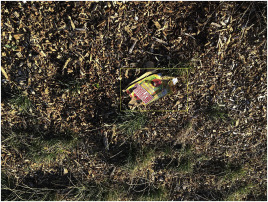Elsevier, Soil Biology and Biochemistry, Volume 148, September 2020
Non-target effects of deliberately released organisms into a new environment are of great concern due to their potential impact on the biodiversity and functioning of ecosystems. Whereas these studies often focus on invasive species of macro-organisms, the use of microbial inoculants is often expected to have specific effects on particular functions but negligible overall effects on resident microbial communities. Here, we posit that such introductions often impact native microbial communities, which might influence ecosystem processes.
Elsevier, Women's Studies International Forum, Volume 82, September - October 2020
This study investigated the empowerment status of urban women in Pakistan using a multidimensional approach in Lahore – a metropolitan city. Analysis of survey data of 260 women revealed that around two-thirds of women were not empowered. Three dimensions of women's empowerment (WE) – control over resources, mobility and participation in household decision making are relatively weak. A significant proportion of women (49%) did not have control over spending of family savings. A majority of them (70-85%) neither had ownership rights of fixed property (i.e.
Elsevier, Advances in Radiation Oncology, Volume 5, 1 September 2020
Recent events have reaffirmed that racism is a pervasive disease plaguing the United States and infiltrating the fabric of this nation. As health care professionals dedicated to understanding and alleviating disease, many radiation oncologists have failed to acknowledge how structural racism affects the health and well-being of the patients we aim to serve.
Elsevier, Case Studies in Chemical and Environmental Engineering, Volume 2, September 2020
Data in 2016 and 2017 has shown that most of Malaysia's river water quality was in Water Quality Index Class II and Class III. The implementation of the Movement Control Order (MCO) has restricted business activities, human movements as well as anthropogenic activities. The sudden decline in human activities has directly impacted the river water quality. Several observations conducted by reporters of local newspapers, reports released by the Department of Environment (DoE) and Ministry of Environment and Water have shown positive changes in water river quality.
Elsevier, Case Studies in Chemical and Environmental Engineering, Volume 2, September 2020
This review goal is to reflect on the challenges and prospects for water quality in the face of the pandemic caused by the new SARS-CoV-2 coronavirus (COVID-19). Based on the information available so far, the detection of SARS-CoV-2 RNA in wastewater has raised interest in using it as an early warning method, to detect the resurgence of infections and to report the risk associated with contracting SARS-CoV-2 in contact with untreated water or inadequately treated wastewater is discharged.
Elsevier, Case Studies in Chemical and Environmental Engineering, Volume 2, September 2020
Water pollution is one of the serious threats in the society. More than 8 million tons of plastic are dumped in the oceans each year. In addition to that beaches are littered by tourists and residents all around the world. It is no secret that the aquatic life ecosystem is at a risk and soon the ratio of plastic/waste to the marine life particulary fish will be 1:1. Hence, in this paper, we have proposed a dataset known as AquaTrash which is based on TACO data set.
Elsevier, Advances in Radiation Oncology, Volume 5, 1 September 2020
Purpose: Poor nutrition is highly implicated in the pathogenesis of cancer and affects the survival of patients during and after completion of definitive therapies. Mechanistic evidence accumulated over the last century now firmly places dysregulated cellular energetics within the emerging hallmarks of cancer. Nutritional intervention studies often aim to either enhance treatment effect or treat nutritional deficiencies that portend poor prognoses.
Elsevier, Materials Today Sustainability, Volume 9, September 2020
CeO2 shows unique catalytic properties by an acid–base bifunctionality as well as redox properties. The acid–base bifunctional properties of CeO2 have been applied to the non-reductive CO2 conversion with alcohols such as dimethyl carbonate (DMC) synthesis from CO2 and methanol. CeO2 shows very high selectivity to DMC; however, the yield of DMC is strongly limited by the equilibrium. The combination of the synthesis of organic carbonates from CO2 and corresponding alcohols with suitable H2O removal methods can enhance the yield of the organic carbonates beyond the equilibrium limitation.
Elsevier, Materials Today Sustainability, Volume 9, September 2020
Manufacturing challenges are anticipated to become worse in the coming decades owing to global material and energy constraints combined with environmental issues associated with conventional processes. Addressing these difficulties calls for a significant amount of research to be conducted to establish robust new technologies that are cost-effective and energy efficient, while at the same time minimizing environmental pollution.
Elsevier, Materials Today Sustainability, Volume 9, September 2020
Solar light-driven water splitting provides a promising way to store and use abundant solar energy in the form of gaseous hydrogen which is the cleanest chemical fuel for mankind; therefore this field has been attracting increasing attention over the past decades.


